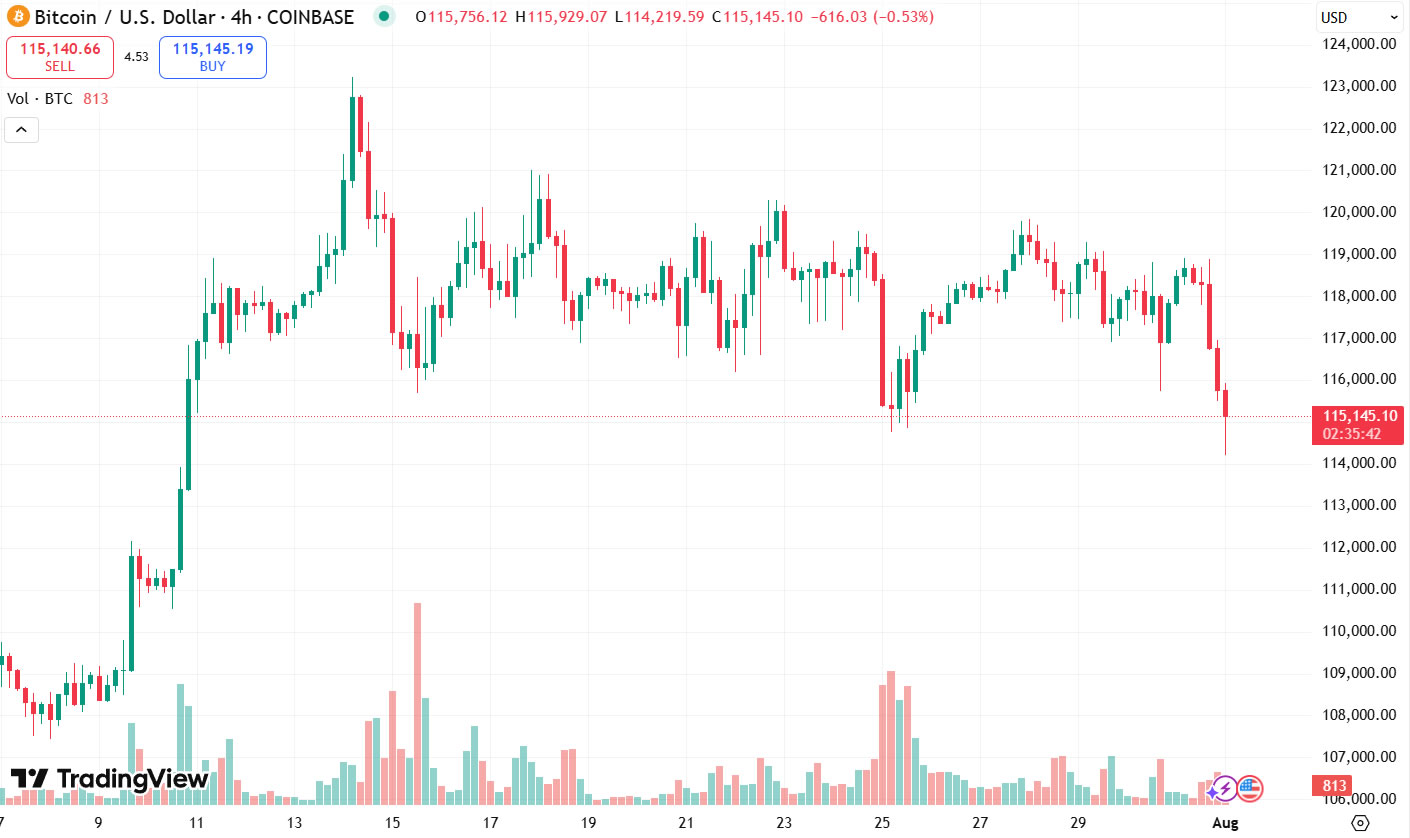Bitcoin dropped to a three-week low near $114,000 after President Trump’s executive order on trade tariffs sparked a broad sell-off in crypto and stock markets, leading to significant trader liquidations and increased market volatility.
-
Bitcoin fell 2.6% to $114,250, breaking its three-week trading range.
-
Over $630 million in long positions were liquidated amid heightened market uncertainty.
-
Experts suggest the sell-off is a temporary correction influenced by tariff fears and profit-taking.
Bitcoin dips to $114K as Trump’s tariffs trigger crypto sell-off. Stay informed with COINOTAG’s expert analysis and market insights.
How Did Trump’s Tariff Executive Order Affect Bitcoin Prices?
Bitcoin’s price decline to a three-week low was directly influenced by President Trump’s executive order imposing higher trade tariffs on multiple countries. The order increased tariffs on Canada to 35% and set new rates for nations like South Africa and Taiwan, intensifying market uncertainty. This led to a 2.6% drop in Bitcoin’s value, breaking its previous range and pushing it closer to the next support level near $111,000.
What Are the Broader Market Implications of the Tariff Decision?
The tariff announcement caused widespread sell-offs across Asian stock and crypto markets. According to Apollo Capital’s CIO Henrik Andersson, the uncertainty surrounding tariffs naturally led to profit-taking after strong market gains. Analysts note that if a trade deal with China is reached, it could alleviate much of the current volatility. Meanwhile, LVRG Research’s Nick Ruck described the dip as a mix of tariff fears, geopolitical tensions, and macroeconomic uncertainty, emphasizing that the correction is likely temporary rather than a structural market shift.

What Are the Recent Trading Statistics and Market Reactions?
Bitcoin’s recent decline coincided with significant trader liquidations, totaling $630 million in the last 24 hours, primarily affecting long positions. Spot crypto markets saw an outflow of $110 billion in the 12 hours leading up to the tariff deadline. Despite this, Bitcoin posted its highest-ever monthly candle in July, closing at $115,784, signaling strong underlying momentum despite short-term volatility.
How Does This Compare to Previous Market Movements?
While July’s monthly close was a record high, it was not the largest monthly gain. November of the previous year saw a $26,000 surge following the US presidential election, marking the largest monthly candle. This historical context highlights Bitcoin’s resilience amid fluctuating macroeconomic and geopolitical factors.
Frequently Asked Questions
What triggered the recent Bitcoin price drop to $114,000?
Bitcoin’s price drop was triggered by President Trump’s executive order raising tariffs on several countries, which increased market uncertainty and led to widespread sell-offs in crypto and stock markets.
Will Bitcoin recover quickly after the tariff-related sell-off?
Market analysts suggest the sell-off is a temporary correction. If trade tensions ease, especially with China, Bitcoin is likely to rebound as investor confidence returns.
Key Takeaways
- Bitcoin’s recent dip: Triggered by President Trump’s tariff executive order, causing a 2.6% price drop.
- Market impact: $630 million in trader liquidations and $110 billion outflows from spot crypto markets.
- Expert outlook: The sell-off is seen as a temporary correction amid broader macroeconomic uncertainty.
Conclusion
Bitcoin’s fall to a three-week low highlights the sensitivity of crypto markets to geopolitical events such as trade tariffs. While short-term volatility has increased, expert analysis suggests this is a temporary correction rather than a long-term downturn. Monitoring ongoing trade developments and market responses will be crucial for investors navigating this dynamic environment.
